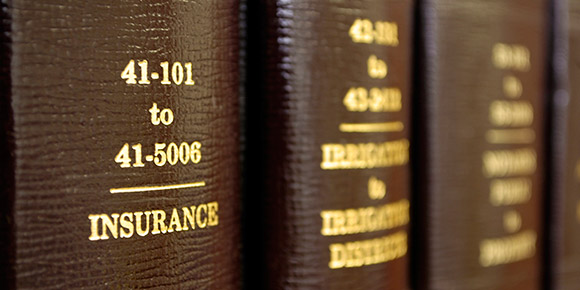NINA E. KALLEN
- 40 FLORIAN STREET
ROSLINDALE, MA 02131 - (617) 363-0547
- fax: (617) 344-6041
- nkallen@kallenlawyer.com
- www.kallenlawyer.com
- insurancecoveragemassachusetts.blogspot.com
Civil Litigators Need to Know: Major Changes to Superior Court Rules 9A AND 9C
On November 1, 2018, significant changes to Massachusetts Superior Court Rules 9A and 9C went into effect. Rule 9A governs almost all civil motions filed in Superior Court. Rule 9C requires that parties confer with each other in advance of filing certain motions.
The revisions to the rules are comprehensive and range from small clarifications to large procedural modifications. This article will not discuss every change, but it does attempt to address the most important ones.
Dispositive motions now subject to the Rule 9C conference requirement
Rule 9A(a)(1) contains the revision most likely to create arguments among counsel about whether the moving party has complied with the requirements. A moving party must now initiate a conference with the other party on dispositive motions as well as discovery motions as required by Rule 9C. Previously Rule 9C applied only to discovery motions.
Procedures for sur-reply briefs and leave to exceed page limits slightly changed
Leave of court is still required for filing sur-reply briefs. Previously the rule stated that filing of sur-reply briefs was “strongly disfavored.” The new Rule 9A(a)(3) provides that leave of court “will be granted only in exceptional circumstances.”
Under the new Rule 9A(a)(6), requests for leave must be captioned as a pleading. As before, they may not exceed one page in length. They must state the grounds and specific relief sought, including a proposed page limit for the sur-reply brief. The sur-reply brief itself must note in its title the date that leave to file was granted. Although Rule 9A(b)(2) seems to indicate that the sur-reply brief should be filed as part of the 9A package, doing so would be impractical as the opposing party would not be aware of the need for a sur-reply brief prior to receipt of the reply brief when the 9A package is filed.
The procedures set forth in Rule 9A(a)(6) also apply to requests for leave to exceed page limits.
Non-parties to be served
Under the new Rule 9A(b)(1)(ii), papers must be served on non-parties if the motion seeks to add the non-party to the case, seeks an order or other relief against the non-party, or the issues affect the personal information or other interests of the non-party. However, such service may be excused by the court for cause, or if a statute or rule authorizes ex parte relief.
Electronic service now allowed, with some exceptions
Under the new Rule 9A(b)(1)(iii), papers may be served entirely electronically if the parties agree in writing to do so. Scanned signatures will be accepted by the court if their filings note that the papers were “served via email.” However, all papers signed under penalties of perjury must bear original signatures when filed with the court. Rule 9A certifications also require original signatures. Note that the summary judgment rules still sometimes require paper service. For example, under the new Rule 9A(b)(B)(5)(iv)(a), the moving party must serve the consolidated statement of facts and the joint appendix in both paper and electronic form.
Notice of filing merged with list of documents
Just as under the previous rule, under the new Rule 9A(b)(2)(iii), the moving party must serve on all parties a “notice of filing” that lists the title of each document filed with the 9A package. The moving party must now also file that notice. The requirement in the previous version of Rule 9A that the moving party file in court a different document list has been removed. This change is bound to reduce the amount of hyperventilating among paralegals and young associates trying to file their first motion.
Moving party must file cross-motion package with original motion
Under the new Rule 9A(b)(4)(ii), the moving party is responsible for filing cross-motions with the 9A package.
Statement of facts in support of summary judgment motions substantially constrained
The most significant changes in the revised rule concern statements of facts in support of summary judgment motions.
Under the new rule 9A(b)(5)(i), statements of facts may not exceed twenty pages. The court may disregard a statement of facts if it is “unnecessarily long,” which implies that some statements must be less than twenty pages.
Statements of facts may include “[o]nly such facts as are material to deciding the motion.” The rule specifically excludes:
- Background facts.
- Quotations from any contract, trust, agreement, or other transactional document, or characterization of such documents (except if admissible through percipient witnesses). However, facts establishing the existence, authenticity, and effective date of such a document may be included.
- Quotations from any statute, regulation, or rule.
Quotations may be included, without any argument or commentary, in an addendum to the memorandum of law.
These changes will likely displease attorneys who use statements of facts to tell a compelling story about how their clients were wronged or why a lawsuit is frivolous. Disputes and motions to strike over what constitutes a “background fact” will probably arise. In a slip and fall case, is the fact that the plaintiff was ninety years old a background fact? In a dispute over insurance coverage for a construction site accident, is the fact that the insured general contractor was building a commercial high rise a background fact?
The revised rule also cracks down on responses to statements of facts, in a manner that reeks of the frustration of judges who have been trying unsuccessfully to use such responses to determine whether any facts are actually disputed. The rule provides that the opposing party may not:
- Deny a fact unless it has a good faith basis for contesting it.
- State that a fact is not supported by the materials cited by the moving party, unless it has a good faith reason for contesting it.
- Include a commentary on whether the fact asserted is relevant or material.
- Assert any additional facts in the response to an individual statement.
- Make legal arguments or advocacy-oriented characterizations concerning the sufficiency, relevance, or materiality of the facts.
Another major change is that under Rule 9A(b)(5)(iii)(B), opposing parties may no longer submit a statement of additional facts. Those facts should be set forth in the memorandum only.
Under Rule 9A(b)(5)(iv)(A), if there is more than one opposing party, the parties must coordinate the statement of facts and responses so that only a single, consolidated document is submitted to the court.
Reference to exhibits in summary judgment motions must cite both statements of facts and exhibits themselves
As before, the parties must submit a joint appendix of exhibits. Under Rule 9A(b)(5)(v)(B), memoranda of law must reference both the exhibits submitted by exhibit number and the paragraph in the statement of material facts. Under Rule 9A(b)(5)(iii)(B), an opposing party who is relying on additional facts should reference the exhibits directly, with page or paragraph references to the documents themselves.
Some summary judgment motions will not have a hearing
Under Rule 9A(b)(5)(vi), the court can deny (but not grant) certain summary judgment motions without a hearing, including:
- Multiple summary judgment motions by a single party, or subsequent summary judgment motions by parties making the same arguments as those the court already resolved.
- Motions for partial summary judgment that will save little or no trial time, will not simplify the trial, and will not promote resolution of the case.
- Motions for summary judgment where a genuine dispute of material fact is obvious on the face of the papers.
Sanctions for noncompliance with summary judgment rules
Under the new Rule 9A(b)(5)(vii), as in the previous version of Rule 9A, the court may disregard any motion or opposition that fails to comply with the summary judgment rules. Under the new rule the court may also return non-complaint motions to counsel with instructions for refiling, and it may impose “other sanctions” for “flagrant violations of the Rule.”
Rule 9C has requirements for conferring on dispositive motions
Rule 9C now requires that parties confer prior to filing dispositive motions as well as discovery motions. When conferring about a Rule 12 motion to dismiss, the parties must make a good faith effort to narrow the areas of disagreement that may be resolved through amendment of the pleading, curative action in respect to defective service, or other means.
When conferring about a summary judgment motion, counsel for the parties must discuss whether the moving party should refrain from filing the type of motion that would qualify for a decision without a hearing under Rule 9A(b)(vi), and should make a good faith effort to narrow the areas of disagreement that may be resolved through amendment of a pleading, dismissal of certain claims or parties, or otherwise.
Nina Kallen, “the lawyer’s lawyer,” is a Massachusetts solo practitioner who drafts dispositive motions and other briefs for civil litigators on a subcontract basis.





